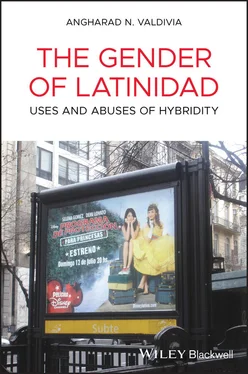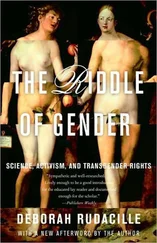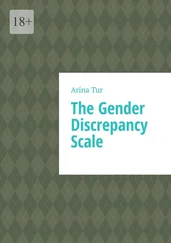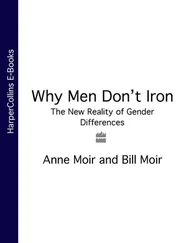Recent production of predominantly Latina/o shows in the post‐network era provides expanded employment opportunities and roles for Latina/os, with possible ruptures in addition to inevitable continuities. The transmediated East Los High (2013–17), for example, provided a welcome Latina/o presence in the digital television landscape, via Hulu (Molina‐Guzmán 2016). The reboot of One Day at a Time (2017–2019) does the same through Netflix. At an organizational level of analysis, these shows function as sites of symbolic annihilation. Were it not for them, Hulu and Netflix would have nearly zero Latina/o presence (Negrón‐Muntaner et al. 2014). Latina/os are found in predictable locations, in working‐class communities, yet the narratives within which they appear present novel ways of treating family structures, fluid sexuality, and productive agency. The salience of these two shows belies the overall ongoing underrepresentation of Latina/os in general in mainstream popular culture. The many critiques applied to them speak to the burden of underrepresentation – so much is expected from these shows in the absence of many others.
A mainstream that underrepresents Latina/os and maintains damaging tropes has consequences in terms of politics, education, and resource distribution. As the Latino Media Gap Report (Negrón‐Muntaner et al. 2014) asserts:
The consequences of this gap are far‐reaching. The current data suggests persistent and unchecked job discrimination in a major US industry. The relegation of Latinos similarly deprives media consumers of innovative perspectives at a moment of rapid industry and demographic change. Equally important, as entertainment and news reports often carry more weight than do other forms of communication, the limited and stereotypical nature of existing stories about Latinos skews the public's perception of US society, sanctioning hostility toward the country's largest minority, which has already become the majority in many cities, including the media capitals of Miami and Los Angeles.
(pp. 1–2)
I write this book 23 years after my Feminism, Multiculturalism, and the Media: Global Diversities (Sage, 1995), 18 years after A Latina in the Land of Hollywood (University of Arizona Press, 2000), and 8 years after Latina/os and the Media (Polity, 2010). The first, an edited collection, was groundbreaking in that it foregrounded media and gender through an intersectional range of vectors of difference and ethnicities, including Latinas, Native Americans/First Nations, Asian Americans, African Americans, Jews, and lesbians. Up to that point, most diversity gender and media studies had focused solely on African Americans. The second book came out as Latina/o Media Studies was beginning to explode as an area of research. In addition to posing questions about audience and interpretation, which were at that time woefully understudied, it covered a broad terrain of mediated culture and analyzed issues of class as well as gender and ethnicity. The third book cohered the intersection between Latina/o Studies and Media Studies, attempting to account for the vast amount of research that was then being conducted and pointing toward future work in an area of study that continues to be dynamic and multifaceted. Mini case studies at the end of each chapter took up two separate issues to illustrate how mediation of Latinidad could be understood through the body of Jennifer Lopez, a major celebrity, and the coverage of Latino death in the Los Angeles Times' “Homicide Report.” These two examples illustrated a continuum of production, representation, audience, and effects borne out by mediatized Latina/os and, in turn, contributing to the circulation of information about Latina/os. The Jennifer Lopez study focused on a spectacular Latina, while the “Homicide Report” analysis explored the implications of reporting the death of unnamed and unacknowledged young Latinos in the greater Los Angeles area. Overexposure of Jennifer and her butt and underexposure of Latino death coexist in the mainstream media.
In all previous and contemporary work, my focus is on the mainstream media. Never underestimating the presence, creativity, and importance of alternative media and Spanish‐language media, I also acknowledge that these are very large areas of research and activity, which are beyond the scope of this book (Albarrán 2009; Chavez 2015; Báez and Avilés‐Santiago 2016). My decision to keep researching what happens in the mainstream is rooted in the firm belief that Latina/os are part of mainstream US popular culture and deserve to be part of the mainstream media – as owners, producers, subjects, and interpreters. By focusing on presence in mainstream popular culture, including survival and archives, mass‐produced and ‐marketed children's toys and books, television, popular music, movies, and celebrity culture, this book addresses Latinidad in its everyday location. The mainstream is normative and discursive – it foregrounds power through narratives, tropes, and cultures. It proposes that which “should be” through a prism of representation that in turn represents institutions and everyday signifying practices (Giles and Middleton 2008). As well, through its wide distribution and circulation, the mainstream contributes to the functioning of institutions and our personal, group, national, and transnational everyday signifying practices. Furthermore, Media Studies research suggests that we learn more from media in the absence of personal experience – so, given the segregated reality of much of our population, the mainstream provides powerful lessons about Latina/os to those not living in contact with us. The fact that Latina/os are spread throughout the United States and come from a wide range of origins, recent and ancient, and, in turn, fan out throughout the world, means that cultural production, circulation, and consumption are globally mobile. The mobility of cultural forms is also complex, dynamic, and consistent. The mainstream has implications of access to media – and also in terms of the circulation of Latina/o narratives and tropes among non‐Latina/o audiences.
In 2019, Latina Feminist Media Studies contributes to many interdisciplinary streams, such as Feminist and Gender Studies, Ethnic Studies, Transnational Studies, Sexuality Studies, and the many forms that Latina/o Studies takes within the United States, such as Chicana/o Studies, Boricua Studies, Dominican Studies, and so on. Recent articles calling out gaps and omissions in mainstream communications and media studies publications point out our gendered (Mayer et al. 2018) and racialized (Chakravartty et al. 2018) citational practices. As this book is being finished, Latinas continue becoming more visible in academic research through Gender Studies journals such as Feminist Media Studies . As a grassroots phenomenon that continuously reacts in concert with as well as against market pressures (Cepeda 2015), Latinidad – and, more specifically, the gendering of Latinidad – has thus emerged as a key related site of inquiry for Latina/o Feminist Media Studies scholars (Cepeda 2015, p. 7). Previous erasure of Feminist Media Studies work also needs to be addressed, as by now there are decades of excellent Latina Feminist Media Studies texts (Valdivia 2018). As well, Latina Feminist Media Studies aims to be taken seriously in interdisciplinary journals such as Latino Studies . In conferences, the most notable inclusion lies in the recently created Race and Media conferences (2916, 2017, 2018), in which the work of Latina feminists is aired in a ventilated conversation across racial categories. As well, The Routledge Companion to Latina/o Media (2016), edited by Maria Elena Cepeda and Ines Casillas, includes many of the Latina feminist scholars whose work guides this chapter and this book. Moreover, in a lead article in Feminist Media Studies , the major feminist journal in our field, Maria Elena Cepeda (2015) clearly articulated the need to call to task practices that, unsurprisingly, center whiteness: we need to move beyond citational practices that exclude Latina Feminist Media Studies research, acknowledge the diversity within Latinidad, and admit the inescapability of transnationalism (Cepeda 2015). I take all three of these challenges very seriously. Journals that focus on the ethnic category of Latino Studies need to take Media Studies seriously as an interdiscipline, related to but different from Journalism, History, American Studies, and so on. This has long been a pet scholarly peeve of mine. No historian, for example, would conduct research without taking history seriously as a discipline. Conversely, scholars in all the fields just mentioned regularly publish books and articles about media in which media scholarship is barely included. This omission is doubled as the myth of discovery about Latinidad applies to scholarship as well as to mainstream media. Many of our feminist colleagues do not read our work, so I followed up my “Latina Media Studies” (2018) article in Feminist Media Histories with an exhortation to feminist media scholars to move beyond the tokenistic mention of Gloria Anzaldúa. This book contributes to a rich body of scholarship, and encourages readers to explore the other scholars, books, and articles that enrich our understanding of the world, mediated ethnic categories, and Latina/os and media in particular. It promises to extend and revise contemporary intellectual paradigms of Latina/o Studies and ethnicity. It underscores the utter necessity of understanding the tension between the need to assert an identity and the reality of the difficulty of maintaining boundaries around that identity. It also encourages the acknowledgment of hybridity as both a tool for inclusion and something to be used in the name of profit. Recognizing the uses and abuses of hybridity gives critical knowledge and potential empowering strategies to underrepresented groups.
Читать дальше












